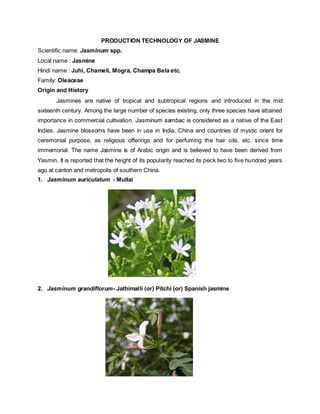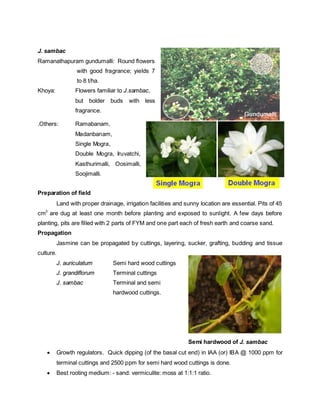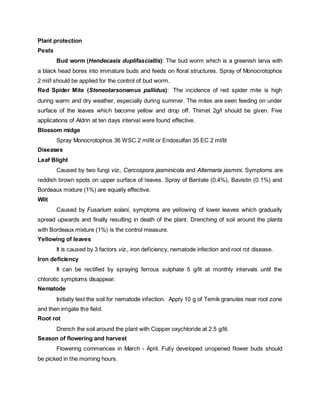Jasmine is cultivated commercially for its flowers, which are used to produce garlands, perfume oils, and tea flavoring. Three main species are grown: Jasminum grandiflorum (Spanish jasmine), J. sambac (Arabian jasmine), and J. auriculatum. They are propagated from cuttings and grown at specific spacing. Pests include budworms and mites. Diseases include leaf blight and wilt. Flowers are harvested in the morning when buds are unopened. Spanish jasmine flowers are used to produce a fragrant concrete by soaking in hexane to absorb the perfume, then evaporating the solvent.












